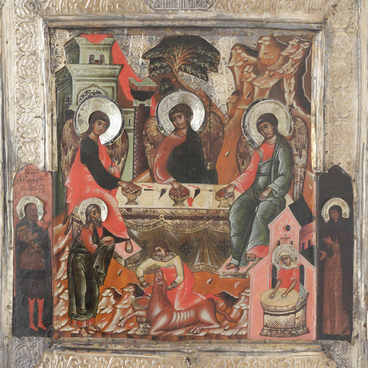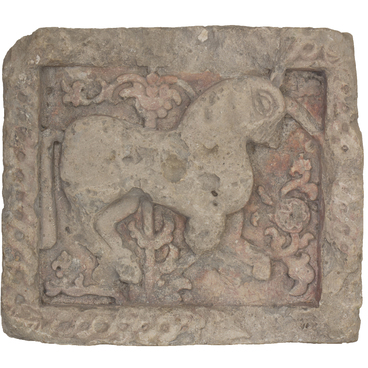A red terracotta tile with a relief pattern of an eight-pointed rosette in the centre, surrounded by a ‘mirror’ image of a flower in a medallion. It was found during the course of excavations in 1991 in the central part of the city of Arkhangelsk, on the site of the German merchant centre. In total, about 150 fragments of stove tiles were found.
These ceramic tiles were designed for facing facades of buildings, walls, stoves, fireplaces, and floors. Terracotta (clay) in building was originally used in Russia only for the external decoration of buildings. They were embossed slabs and balusters imitating stone carving characteristic of Russian architecture. To apply a relief pattern, clay was laid in a carved wooden mould similar to those used for gingerbread. Then the tile was dried and fired.
From the end of the 16th century, terracotta began to be used in domestic interiors for stove special box-shaped stove tiles, the front side of which was covered with ornaments. For better fastening of tiles to a wall or a stove, a rump was attached from the back of the tile. Production of tiles was widespread throughout Russia, and at some factories, special sets of stove tiles were produced. Tiled stoves were very popular because they not only heated residential and public buildings but also decorated their interiors.
Stone merchant centres began to be built in the city of Arkhangelsk in 1667 by the decree of Tsar Alexei Mikhailovich after the fire in 1667, which destroyed the wooden churches, markets, customs, barns and shops ‘all without a trace’. Overseas trade of the Russian state was in jeopardy since at that time Arkhangelsk was the only seaport of the country. Construction continued until 1684, with Russian and German merchant centres, a fortress between them and six towers in the corners of the complex.
At the beginning of the 18th century, Peter I began the construction of a new seaport of the Russian state, and Arkhangelsk lost its importance in foreign trade. The merchant centres deteriorated over time, and there were not enough local resources for their renovation. From the end of the 18th century, the German merchant centre was gradually disassembled and by 1851 completely dismantled.



